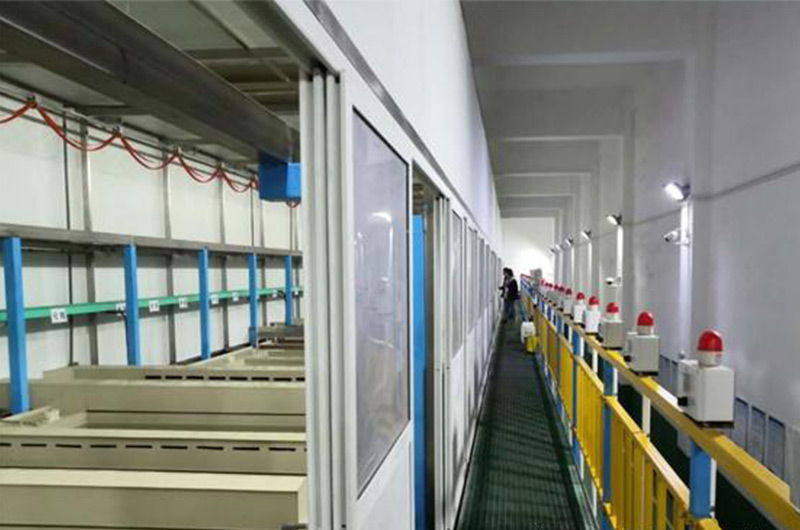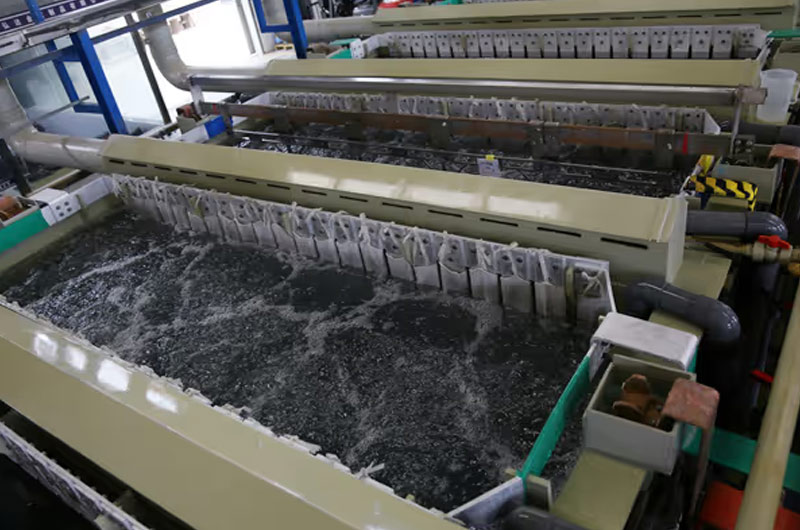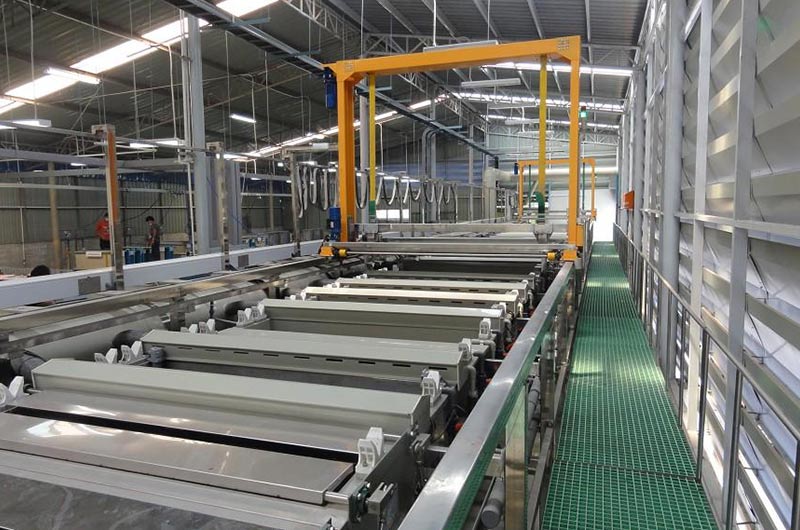Causes and Solutions of Anodizing Color Difference
Updated : Jan. 18, 2024Anodized aluminum sheets are created by placing aluminum sheets as anodes in a corresponding electrolyte solution. Under specific conditions and the application of external electric current, electrolysis occurs, forming an oxide film which is subsequently colored.
The coloring process is influenced by factors such as the composition, content, concentration, temperature, and processing time of the solution, leading to variations in the final coloration of the aluminum sheets and resulting in color differences.
Achieving color consistency in anodized aluminum poses difficulties due to the involvement of numerous variables in the anodizing process.
Why does anodized aluminum plate have color difference?
Differences in aluminum sheets from different batches
The alloy composition and electrolyte for aluminum sheets from different batches cannot be entirely consistent. Even with multiple adjustments during the coloring process, achieving identical results across different batches is challenging.
Improper pre-treatment operations
Color discrepancies existing during the pre-treatment process make it difficult to achieve consistent coloring for aluminum sheets.

Variations in oxide film thickness
If the oxide film thickness varies within the same batch of aluminum sheets, color deviations will occur.
Electrolyte concentration
As production progresses, electrolyte is continuously consumed and needs to be replenished gradually and in small quantities. Due to the variable nature of the oxidation bath, color discrepancies are inevitable in the resulting aluminum sheets, particularly noticeable in large-scale applications like building facades.
Dyeing temperature
During the dyeing process, the rate of coloring accelerates with an increase in temperature. Adjusting the dyeing temperature appropriately can help avoid excessively long or short dyeing times based on specific color requirements.
Dyeing time
Similar to electrolytic coloring, color deepens gradually with time under unchanged conditions. Rapid coloring may lead to difficulties in achieving a uniformly consistent color.

Sealing reasons
Sealing treatment is an essential part of anodizing, and it may cause a slight lightening of color compared to pre-sealing due to fading.
Color variations in anodized aluminum sheets are unavoidable. However, companies and customers typically establish an acceptable range for color discrepancies, and products falling within this range are considered normal.
How manufacturers reduce color difference
Accurate production process control
Precise control of parameters such as temperature, immersion time, and coloring agent concentration is crucial for consistency and achieving the desired color. Regular monitoring and adjustment of these parameters help maintain color consistency over time.
Quality inspection
Utilizing numerical methods, such as the International Commission on Illumination (CIE) approach, can convey precise color specifications, eliminate ambiguities, and reduce the likelihood of variations.
Enhanced control of oxide film thickness
During the anodizing process, bath concentration, as well as temperature, current density, and oxidation time, significantly impact the arrangement and depth of the oxide film's pores. The workshop must adjust and match these process parameters to ensure the uniformity and stability of the oxide film structure.

Immediate coloring after anodizing
Coloring should occur immediately after anodizing. Prolonged exposure of the anodized surface to air may lead to reduced pore size and potential contamination with acid mist, dust, or other pollutants, making coloring difficult. If the coloring tank is too small and cannot accommodate timely coloring, the profile should be immersed in a separate pure water tank.
Post-coloring water rinse
Post-coloring water rinse is also a crucial stage. After coloring, a secondary water rinse is essential, and water quality can influence color discrepancies. Otherwise, inadequate sealing quality or poor adhesion of electro-coating may occur, leading to detachment.
Sealing quality
Optimizing the sealing process, controlling the immersion time for sealing, and strictly adhering to sealing procedures are essential for ensuring satisfactory sealing quality.
Customer solutions
Effective communication with anodizing manufacturers
Effective communication with anodizing manufacturers is crucial for minimizing color variations and achieving the desired results in anodized products.
Procure aluminum sheets from the same batch whenever possible
For the same facade, it is advisable to use aluminum sheets from the same batch of oxidized materials. Additionally, follow the manufacturer's arrow markings on the aluminum sheets during construction to maintain a consistent texture direction.
Utilize clever design to mitigate color differences
Consider clever design strategies to minimize color differences, such as the Orientkaj Station in Copenhagen. In this architecture, anodized aluminum sheets are cut into narrow strips and laid at different angles on all facades and the roof of the station.

Another approach, similar to the CRBC Research Center in France, involves deliberately emphasizing color differences by adjusting the ratio of the anodizing bath solution. This allows the creation of anodized aluminum sheets with different shades of gold, which can be paired together for a coordinated aesthetic.





